
Welcome to part 3 of my Travel log. Today I am posting about my extended trip to China and my recent visit to Xi'an where I got the opportunity to visit the tomb of the Terracotta Army. This is another destination on my bucket list of "must visit" places.
According to local archaeologists, this tomb is said to be "an elaborate mausoleum created to accompany the first emperor of China into the afterlife." It is believed to date back to the late 3rd century BCE. Our guide mentioned that the tomb is still only partially excavated and continued work to uncover the rest of it has been put on hold for the time being. She did not explain why.
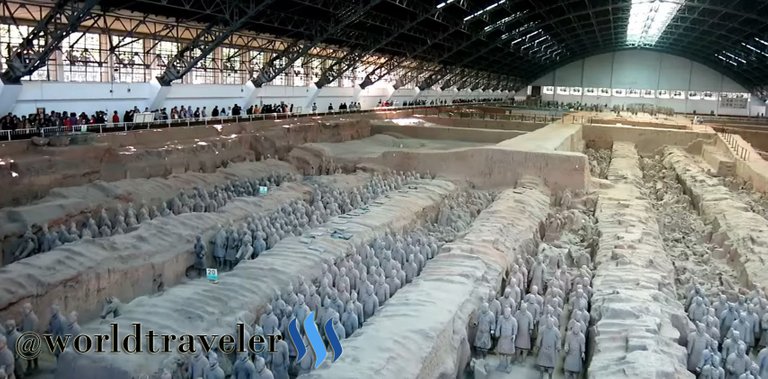
Four main pits have been excavated and each contains a number of different statues. We were told that there were around 8000 statues, but that this number was only a rough estimate.
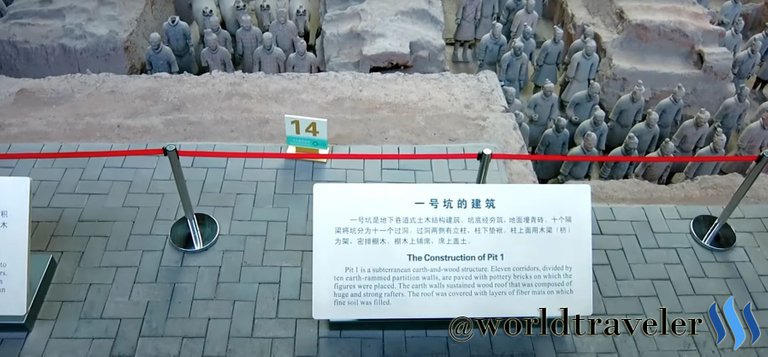
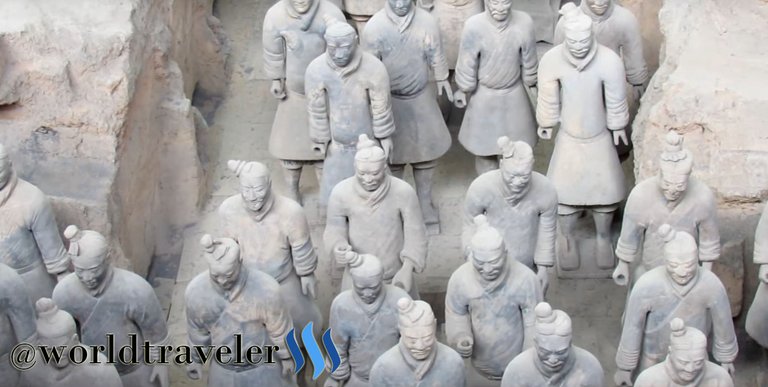
The tomb is enclosed within a large structure that is hermetically sealed in order to preserve and prevent the decay of the statues and artifacts. Each pit contains several different figures and each statue is said to be unique. They are life size and differ in height, uniform, and hairstyle depending on their rank. We were told that each statue even had a unique face.
I couldn't remember all of the figure types, but according to Wikipedia
The figures are of these general types:
armored warriors; unarmored infantrymen; cavalrymen who wear a pillbox hat; helmeted driver of chariots with more armor protection; spear-carrying charioteers; kneeling archers who are armored; standing archers who are not; as well as generals and other lower-ranking officers. There are however many variations in the uniforms within the ranks, for example, some may wear shin pads while others not; they may wear either long or short trousers, some of which may be padded; and their body armors vary depending on rank, function, and position in formation. There are also terracotta horses placed among the warrior figures.
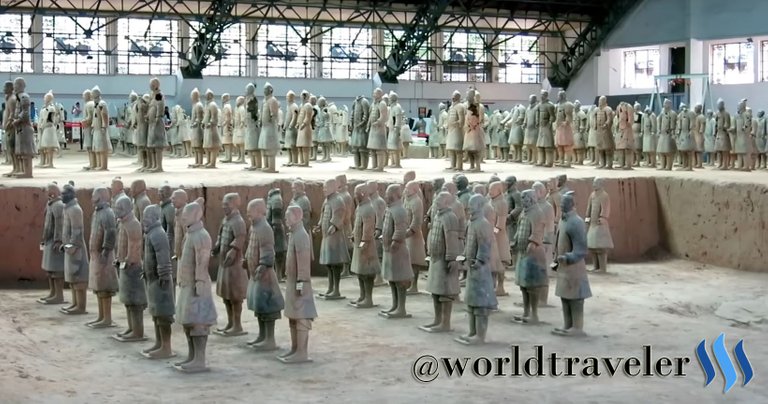
Below is an illustration of the various categories and variations of some of the statues.
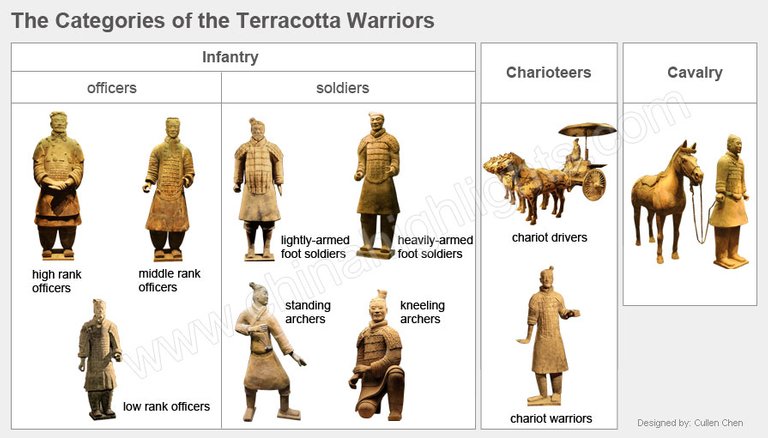
The craftsmanship and detail of each statue was amazing. Although we could not get close enough to admire each and every detail up close, you can tell a lot of time and care was put into the creation of each figure. Many of the statues were damaged and near the end of the tour, we had the opportunity to visit one of the few workshops where some statues were being restored and made. In addition to the restoration, there were also souvenir versions of the statues being made for sale to visitors who wanted to take their own Terracotta soldier(s) home.
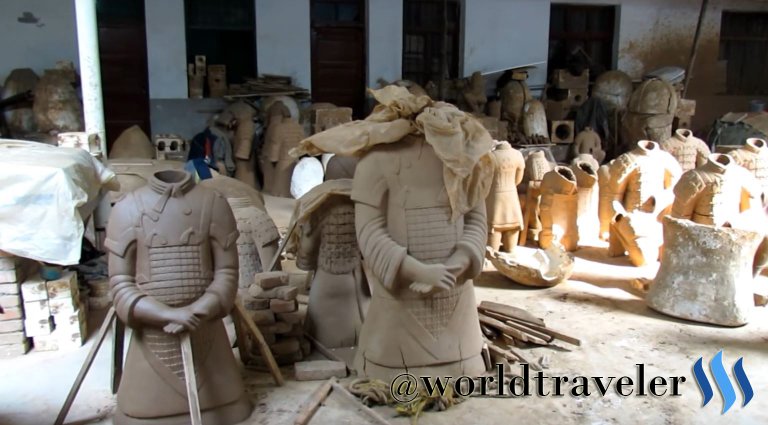
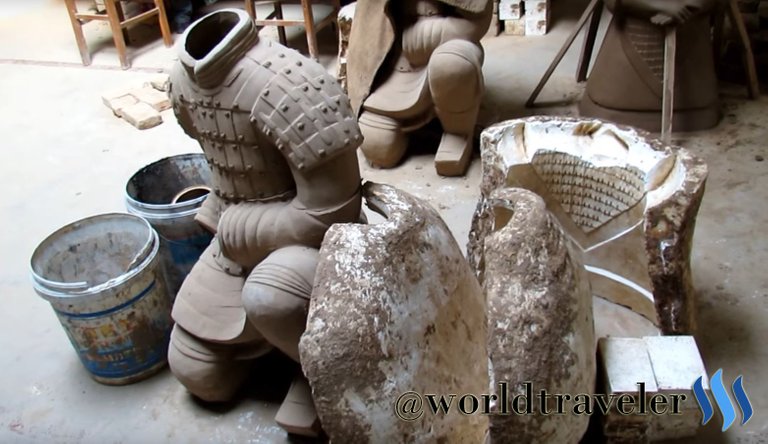
It's amazing how they are all handmade one-by-one and resemble the actual statues in the tomb

Below is an illustration of the various unique features that can be found on the different statues in the tomb as well as a little more history about the tomb itself.
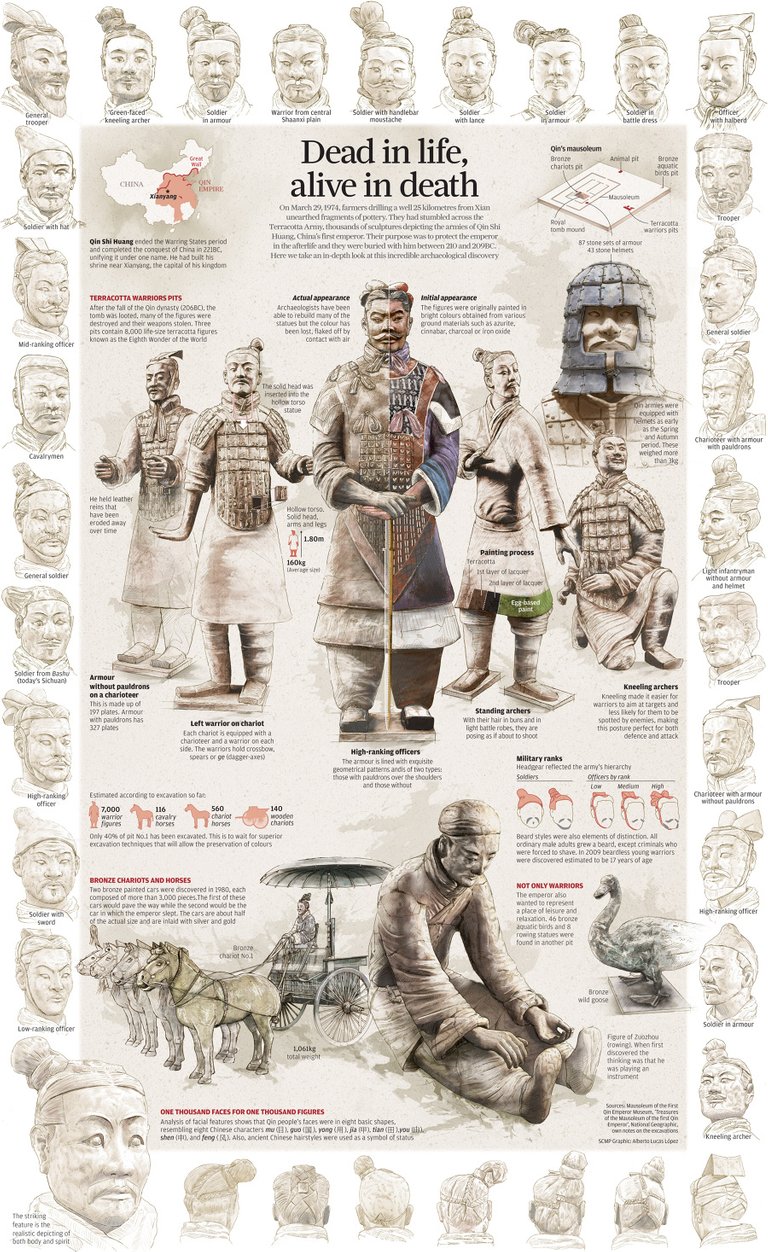
Below is another illustration of the process used to create the various statues that are located in the tomb. It depicts the delicate process and care that went into making each and every figure and the number of people that it took to create what we got to see today.

I hope you enjoyed the photo's and content of this post. Please comment below and follow me to read my future travel posts.
Photos taken using: GoPro Hero 4 Black and IPhone 6s
To read my previous posts from my Travel Log series, please click on the links below:
My Travel Log : Beijing - Great Wall of China
My Travel Log : Beijing - Forbidden City
https://steemit.com/art/@achim86/terracotta-army
Join us in the steemtrail chat channelUpvoted by travel-trail
I want to advise one great site for you where you can read https://set-travel.com/en/ Where you can read a lot of interesting articles about various countries and where you can look, I think you really will like it)